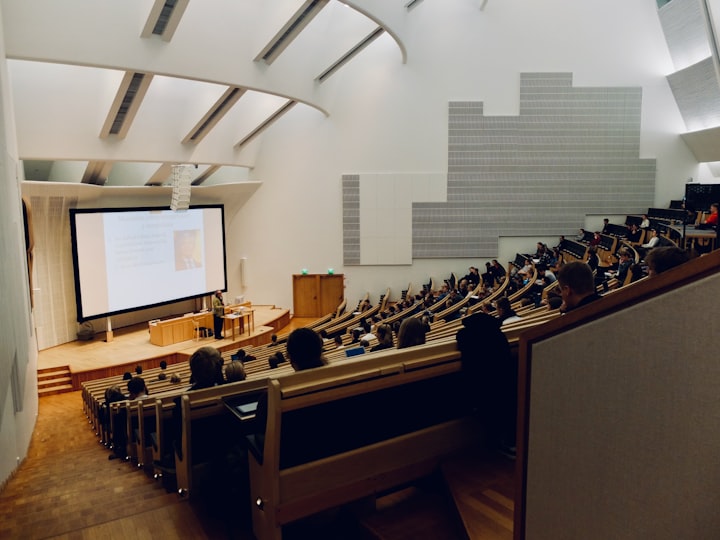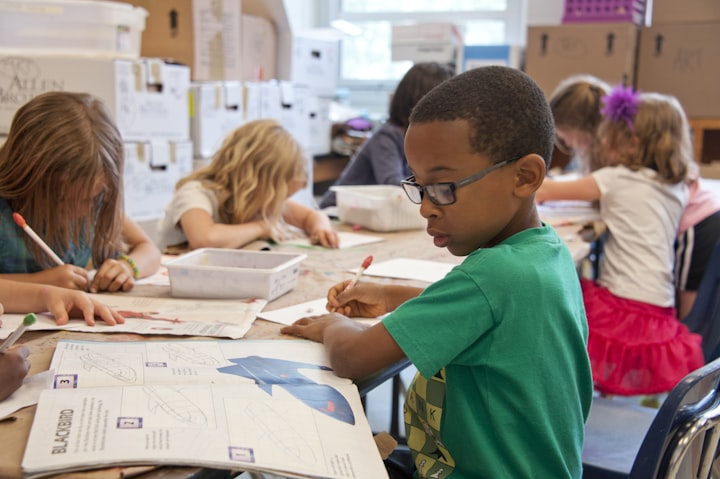How Do Educational Institutions Compare or Contrast with the Wider Society?
Education as a social institution is an agent of socialization. Young people go to school to learn social skills and acceptable social behavior. These skills help them to coexist with other members of society, both locally and internationally.
Society describes a group of people who live in a defined geographical area and share certain norms and values. Society builds for itself social institutions that help it meet different social needs and, by extension, achieve social order. Education institutions are an example of these social institutions. Others include the government, economy, family, healthcare, and religion.
Education as a Social Institution:
Education as a social institution is an agent of socialization. Young people go to school to learn social skills and acceptable social behavior. These skills help them to coexist with other members of society, both locally and internationally.
Education trains young people in skills that are required by the economy, which makes them important and productive members of society. These skills also help them earn a living later in life.
Education also trains young people on the need for respecting authority, being patriotic, and being responsible for other people. By so doing, educational institutions provide the government with responsible, well-socialized citizens.
Other social institutions help educational institutions too. The family institution, for example, provides schools with learners. Families socialize kids during pre-school years and continue to assist schools in socializing their young ones. Parents also pay school fees that help educational institutions to remain operational
Education is also conditioned by economic institutions. When the economy is too weak to sustain teachers’ salaries or to hire new teachers, education institutions suffer teacher shortages. A strong economy provides schools with sufficient teachers.
Education depends on the government for free education and subsidized programs. The government also regulates educational institutions through the education ministry, curriculum development bodies, and teacher professional organizations such as the TSC in Kenya.
Religion as a social institution helps education by sponsoring schools. In Kenya, for example, there are many schools that are under the sponsorship of churches, notable ACC&S, the Anglican Church, and the Catholic Church.
Bottom Line:
All social institutions are interrelated and interdependent. Education institutions cannot exist in isolation.
Educational Institutions vs. the Wider Society (Other Social Institutions)
Different have different roles in society, which means each institution has its unique ways of doing things. But because they all work towards a common goal of socializing people and maintaining social order, social institutions share a handful of similarities. Let’s focus on the similarities and differences that educational institutions have with other social institutions.
Transmission of Society’s Norms and Values
For society to thrive, there must be a sufficient degree of homogeneity. Schools help create this homogeneity by training children to maintain law and order. Education encourages cooperation and social solidarity in society. It gives young people a sense of belonging and enhances the feeling that the social unit carries more weight than individualism. education al institutions do this by encouraging teamwork and group discussions in the classroom.
This is the exact same role that religion and family institutions play. Family, religion, and educational institutions all teach history to members of society and use historical examples as the link between an individual and society. When learners study the history of Kenya’s road to independence, for example, they feel like they are a part of something larger than themselves. When they learn about the sacrifices Jesus and his disciples made for the advancement of mankind, they develop a sense of commitment to the wider society. And when older family members share legends and stories with children at home, children develop the urge to stand up and fight for the betterment of society.
In contrast, educational institutions use a clearly defined system to transmit societal norms and values. Schools offer formal education that’s defined by order and scientifically-proven teaching methods. Family institutions use informal teaching methods to pass down values and norms from one generation to the next. The content of their lessons isn’t always factual and cannot be verified. Also, schools dwell on data and facts. Religious institutions focus more on spirituality; most of their teachings aren’t anchored on verifiable data, so they train people to trust and believe.
School Membership
Education institutions can pick and choose who becomes their member. High schools in Kenya, for example, are at liberty to sieve out learners that they think don’t fit into their social order. This is the same with religious institutions- churches can banish rogue members whenever they want. The duration of time that a student is a member of an educational institution is also limited.
On the contrary, membership in the family institution is based on kinship relationships. People become members of their family at birth and keep their membership till death- sometimes even after death. The duration of time that a person is a member of a family is unlimited. The same goes for economic institutions and government institutions. Any person born in a country receives services from the government until death.
School as an Agent for Role Allocation
The educational system classifies learners and prepares them for their future roles in society. In other words, education allocates young people roles within the structure of the wider society. Schools teach young people, test them, evaluate them, and match their talents, skills, competencies, and capacities to the most suitable jobs in the labor market. Doctors, for example, become doctors long before they attend to their first-ever patient. Some know they will make good doctors as early as when they are in high school. Schools work towards ensuring that the most talented and able members of society are allocated to those positions which are functionally most important for society. That's why education is said to be a social equalizer.
In contrast, in the wider society, role allocation is based on classism. Positions that are functionally most important for society are reserved for the affluent and the powerful. In government institutions, for example, the capitalist ruling class rewards their cronies and people who would best serve their interests.
Transmitting the Ideology of the Ruling Class
Education systems justify and legitimize the capitalist system. Education is designed to reproduce the attitudes and behavior required to serve the ruling class. It teaches future workers to accept and submit to the powers that be; to submit to their exploitation. That includes managers, administrators, and politicians. Social relationships in schools replicate the hierarchical division of labor in their workplace.
The role of religious institutions is similar to this. Churches train people to respect authority as that's what God demands. Some doctrines even argue that suffering at the hands of oppressors will attract a huge reward in the afterlife.
Education as a Process of Indoctrination
In school, a child is trained in the accepted values to fit in society. The classroom is used for the perpetuation of values, beliefs, and faith. Kids are trained to believe in the superiority of their cultural values and beliefs. That's basically indoctrination.
Religion throughout history has been a powerful tool of indoctrination. Religious people are taught to believe in the superiority of their beliefs.
Education as an Instrument of Social Change
Education is the most powerful tool for social change. It is through education that society can bring desirable changes and modernize itself. Educational institutions have been used extensively as tools for driving changes in agricultural practices, politics, constitutional dispensations, and the industrial revolution. Other social institutions such as the government and economic institutions rely on education to drive important changes in society.
In contrast, some institutions such as religion are rigid and always lean towards the maintenance of the status quo. Religious organizations want their members to believe in religious books that have existed for thousands of years. They oppose technologies and scientific discoveries that they see as a threat to their members' spiritual beliefs. Education pushes people to ditch superstitious beliefs and irrational fear of supernatural things.
Education and gender roles
Education has contributed to the improvement in the status of women. It helps them in moving away from traditionalism to modernity. It has helped them to seek employment and to come out of the family.
In contrast, the institution of family pushes against changing gender roles. Some religious institutions, especially in Islam, are also against the changing role of women in the family.
Education and punishment
Educational institutions, just like all other social institutions, punish and discipline their members.
The contrast is in the mode of punishment. In school, punishment is mild and is geared toward helping learners to excel in life. It is very rare these days for a learner to be dismissed completely from school. The government, on the other hand, gives severe punishment for wrongdoings. It jails social misfits and condemns some to life imprisonment or even death. Religion, on the other hand, condemns sinners to an eternity of pain and suffering in hell.
Conclusion
There are more similarities between educational institutions and other social institutions than there are contrasts. In the grand scheme of things, all institutions pull together to enhance cohesion in society. The few contrasts that exist are a result of education being progressive and other institutions being conservative.







Comments
There are no comments for this story
Be the first to respond and start the conversation.